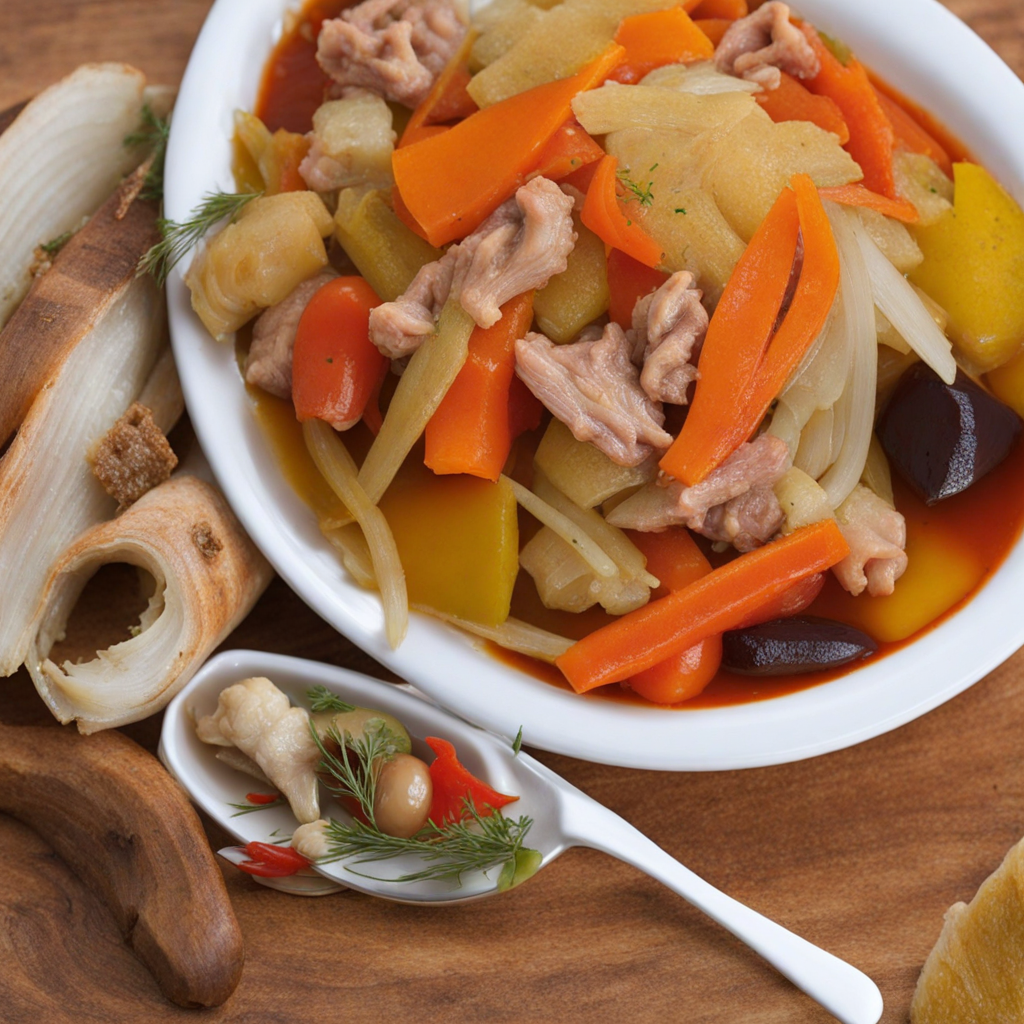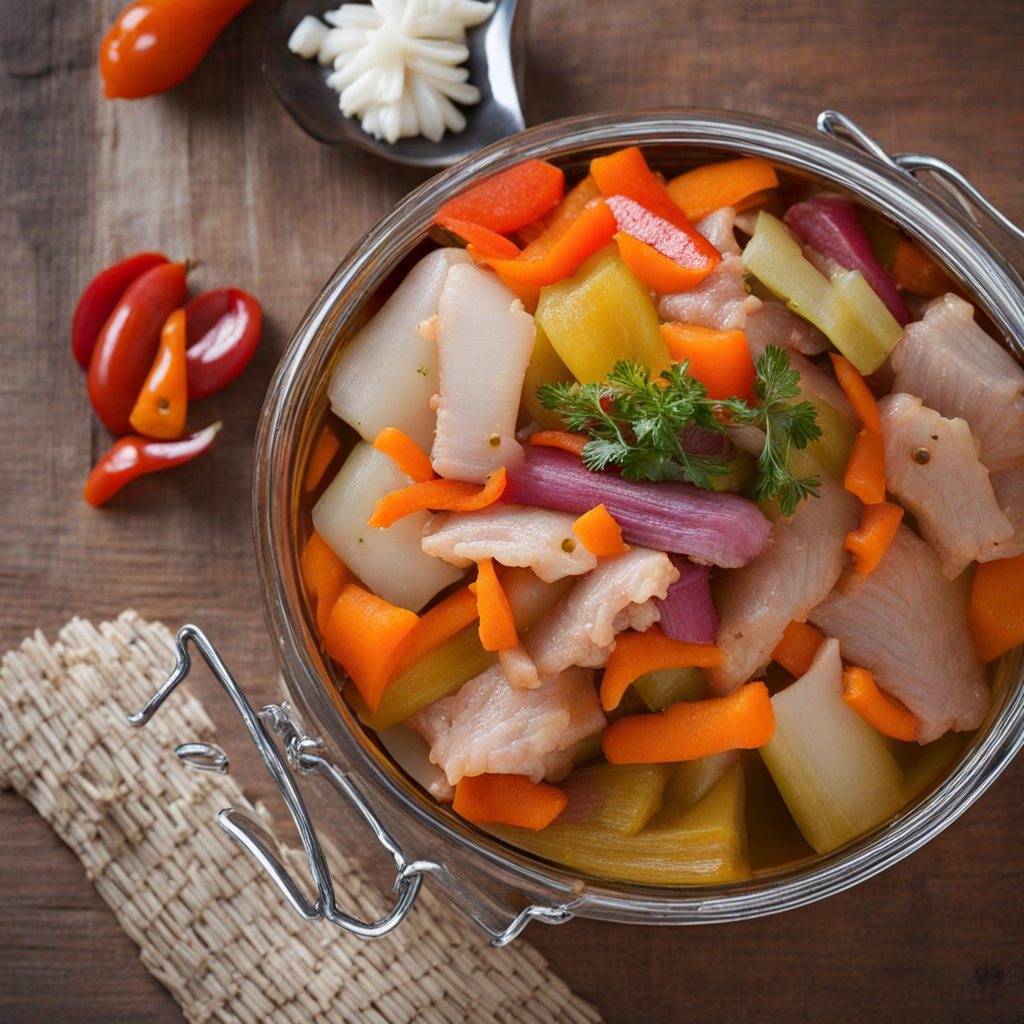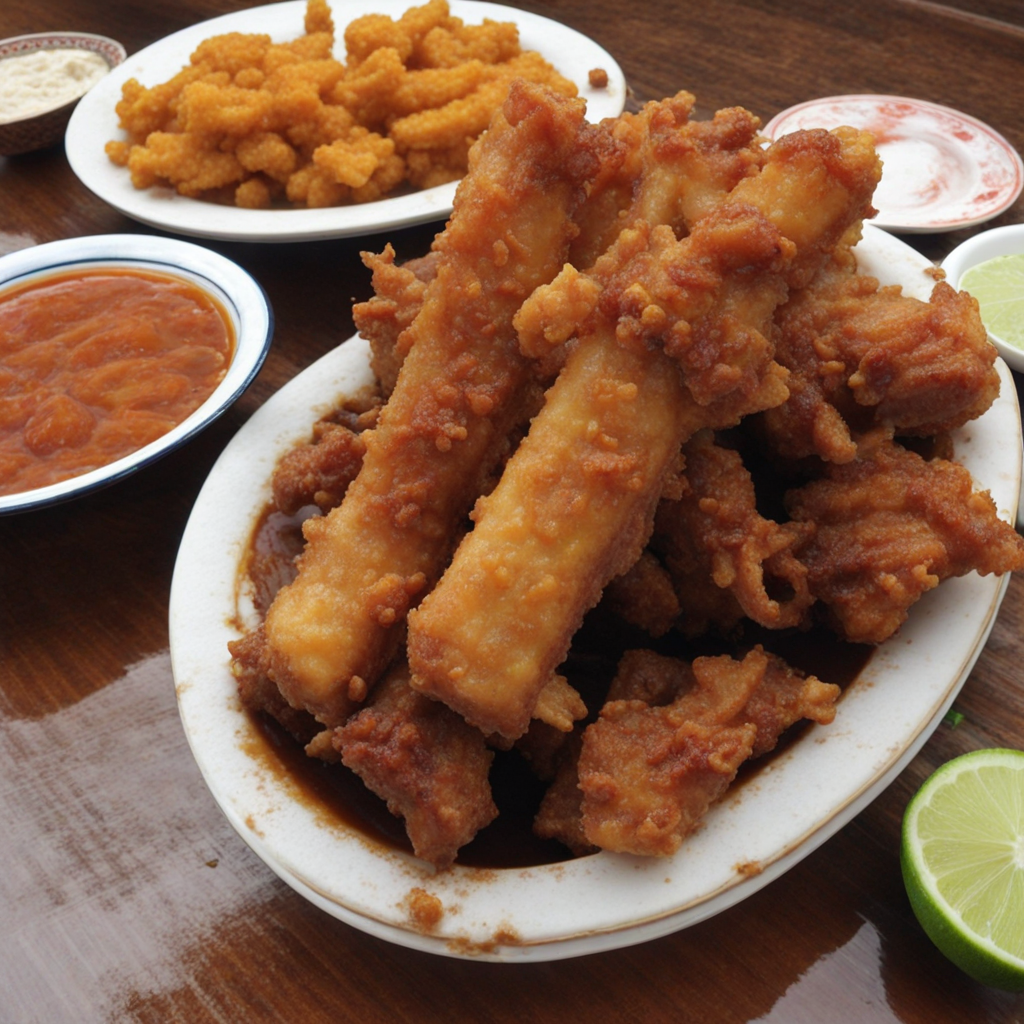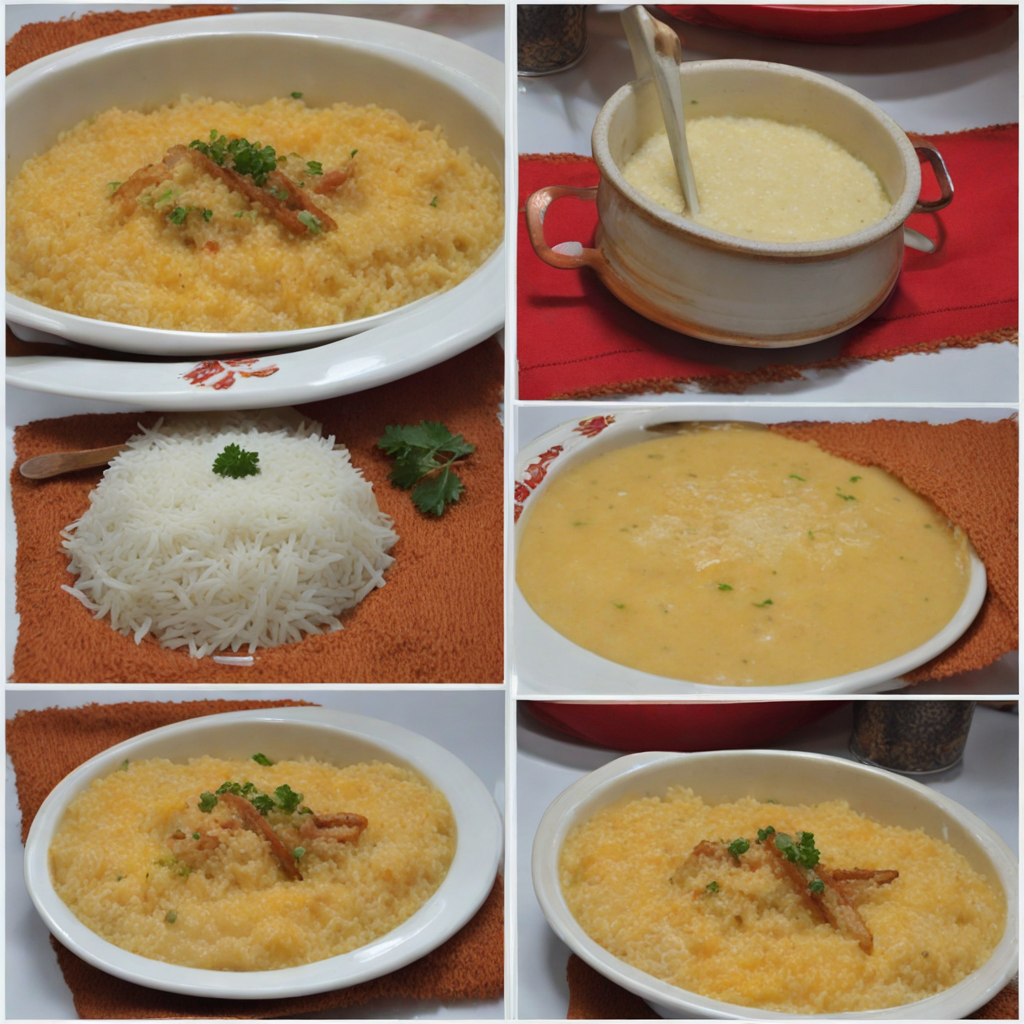Escabeche
Escabeche is a traditional Bolivian dish that showcases a delightful blend of flavors and textures. At its core, Escabeche typically features marinated meats, often chicken or fish, that are cooked and then soaked in a tangy mixture made from vinegar, citrus juices, and a variety of spices. This marination process infuses the meat with a vibrant taste, balancing acidity with savory notes. The dish is often accompanied by an array of colorful vegetables, such as carrots, bell peppers, and onions, which are pickled in the same tangy mixture, adding a refreshing crunch that complements the tender meat beautifully. The preparation of Escabeche is not just about the marinade; it is also a celebration of spices that are integral to Bolivian cuisine. Commonly used spices include cumin, garlic, and bay leaves, which lend depth and warmth to the dish. The combination of sweet and sour flavors is essential, providing a mouthwatering contrast that keeps diners coming back for more. The dish is often served chilled or at room temperature, making it a perfect option for gatherings or as a light meal on warm days. In Bolivia, Escabeche holds a special place in culinary traditions, often enjoyed during festive occasions or family gatherings. Its vibrant colors and bold flavors make it visually appealing, while the variety of textures—from tender meat to crunchy vegetables—creates a satisfying eating experience. Served with sides like boiled potatoes or rice, Escabeche invites you to explore the rich culinary heritage of Bolivia, offering a taste that is both unique and unforgettable.
How It Became This Dish
The History of Escabeche in Bolivia: A Culinary Journey Escabeche, a delightful dish that has captured the hearts and palates of many, holds a special place in Bolivian cuisine. This dish, which typically consists of marinated fish or meat served with pickled vegetables, embodies a rich tapestry of history, culture, and flavors that reflect Bolivia's diverse culinary landscape. Understanding the origins, cultural significance, and evolution of escabeche offers insight into how food can be a vessel of tradition and identity. #### Origins of Escabeche The roots of escabeche can be traced back to the Spanish colonial period, when European culinary practices began to integrate with indigenous ingredients and techniques. The word "escabeche" itself is derived from the Arabic term "sikbāj," which refers to a method of preserving food in vinegar and spices. This preservation technique made its way to Spain during the Moorish occupation and eventually spread to Latin America with the arrival of Spanish colonizers. In Bolivia, the dish took on a unique identity, shaped by the country's varied geography, which includes the high Andes, lush valleys, and the Amazon rainforest. The incorporation of local ingredients such as freshwater fish, herbs, and vegetables allowed Bolivian escabeche to develop its own flavor profile, distinct from its Spanish and Middle Eastern predecessors. Fish from the rivers and lakes, particularly the Amazon Basin, became a crucial ingredient, as did chicken and other meats, reflecting both the availability of resources and local tastes. #### Cultural Significance Escabeche is more than just a dish; it is a cultural artifact that reflects communal values and culinary traditions in Bolivia. Traditionally prepared for celebrations and gatherings, escabeche is a dish that brings people together. It is often served during festive occasions such as weddings, holidays, and family reunions, symbolizing hospitality and abundance. The preparation of escabeche is a communal activity, with families often coming together to prepare the dish. The process of marinating and pickling is not just about flavor; it is a way to bond, share stories, and pass down recipes from one generation to the next. In many Bolivian households, the recipe for escabeche is a closely held secret, varying from family to family, which adds to its significance as a marker of identity and heritage. Additionally, escabeche serves as a reflection of Bolivia's cultural diversity. With a population composed of various ethnic groups, including Indigenous peoples, mestizos, and descendants of European immigrants, the dish has absorbed a myriad of influences. Each community has contributed its unique twist, whether through the choice of ingredients, spices, or methods of preparation. For instance, in some regions, escabeche may be made with llama meat, while in others, it may feature fish like pacu or surubí, showcasing the local gastronomy and biodiversity. #### Development Over Time As Bolivia transitioned through various historical epochs, so too did escabeche evolve. The 20th century saw significant changes in food production and consumption patterns, influenced by urbanization and globalization. As people moved to cities, traditional practices began to shift, leading to adaptations of classic recipes. While many still maintain the traditional methods of preparation, others have embraced modern cooking techniques and ingredients, creating a fusion of old and new. In urban areas, escabeche has become more accessible, with many restaurants adding it to their menus. This commercialization has introduced the dish to a broader audience, including tourists and expatriates, who may not have been familiar with Bolivian cuisine. However, this evolution has sparked debates about authenticity and the preservation of traditional culinary practices. Some chefs and home cooks are committed to maintaining the dish's heritage, while others experiment with contemporary interpretations, incorporating international flavors and techniques. Moreover, the rise of food tourism in Bolivia has placed escabeche in the spotlight. Culinary enthusiasts and travelers seek authentic experiences that connect them to local culture, and escabeche serves as a perfect medium. Cooking classes and food tours often feature the dish, allowing visitors to engage with local customs and learn about the history behind the ingredients. This interaction fosters a deeper appreciation for Bolivian cuisine and its narratives. #### Ingredients and Preparation The classic preparation of escabeche involves marinating the main protein—typically fish or chicken—in a mixture of vinegar, oil, garlic, and a medley of spices, which may include cumin, paprika, and even a hint of chili for heat. The marinated protein is then cooked and served alongside a vibrant array of pickled vegetables, such as carrots, onions, and bell peppers. The colorful presentation of escabeche reflects the diversity of Bolivia itself, showcasing the abundance of its agricultural produce. In rural areas, where traditional practices prevail, the preparation of escabeche can be an elaborate affair. Families may catch fish from local waters, using age-old fishing techniques passed down through generations. This connection to the land and water not only enhances the dish's flavor but also reinforces the importance of sustainability and respect for nature in Bolivian culture. #### Conclusion Escabeche is a dish that encapsulates the rich cultural heritage of Bolivia, providing a delicious connection to the past while also adapting to the present. Its origins in Spanish colonialism, combined with Indigenous influences and modern adaptations, create a dish that is both traditional and contemporary. As Bolivians continue to celebrate and innovate around escabeche, the dish remains a symbol of community, identity, and resilience. Through the lens of escabeche, we can see how food serves as a narrative medium, weaving together stories of migration, adaptation, and cultural exchange. Whether enjoyed at a family gathering or in a bustling restaurant, escabeche stands as a testament to Bolivia's culinary richness and the enduring importance of food in fostering connections among people and cultures.
You may like
Discover local flavors from Bolivia







